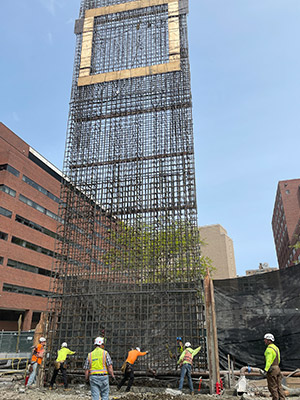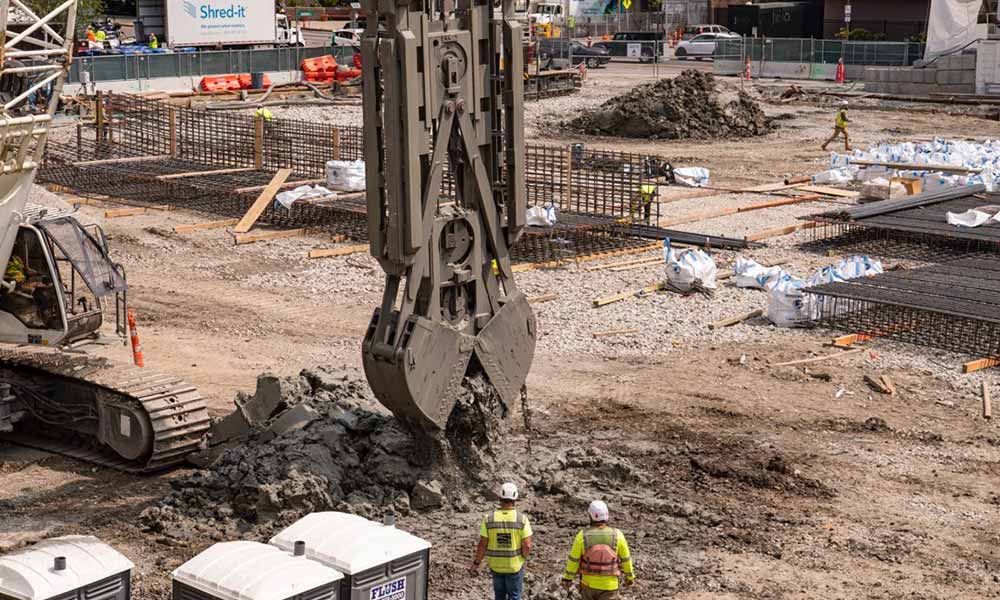MGHer’s green thumb gives back
Dolph Smith, RN, staff nurse in the MGH Emergency Department (ED), has always enjoyed gardening. As his fresh produce sprouts, Smith is using his green thumb to give back to his local community.
News2 Minute ReadJul | 27 | 2023

Beginning in May, the very first pieces of the Phillip and Susan Ragon Building were put in place with the construction of a slurry wall. The slurry plant – nine large tanks – arrived to the construction site to mark the beginning of this exciting new phase, which will be ongoing for the next 3 to 5 months.
A slurry wall is used to build reinforced concrete walls to provide a foundation element to support the building, and to prevent groundwater from getting into the underground building. More than 50% of the overall perimeter of slurry wall panels have been put in place since this phase began, with an average of four panels being placed in the ground each week.
A clamshell-shaped bucket will excavate down between two concrete guide walls, creating a trench for a panel section, about 10 to 25 feet wide, of the slurry wall. This trench is filled with a slurry mixture of water and bentonite – a clay material – during excavation to keep the trench from collapsing. Once excavated to the desired depth, 100 feet or more, reinforcing steel cages – being built this week – are lowered into the trench and placed with concrete, displacing the slurry mixture to be reused for the next panel section. When these concrete-filled cages cure, they form the walls and the interior columns of the enclosed area of what will be the Ragon Building’s parking garage.
Dolph Smith, RN, staff nurse in the MGH Emergency Department (ED), has always enjoyed gardening. As his fresh produce sprouts, Smith is using his green thumb to give back to his local community.
When Salem Hospital’s Respiratory Therapy team needed extra support, staff from Mass General helped. They continued the partnership to create systemwide learning opportunities through the Mass General Brigham Respiratory Therapy Educational Program.
Mass General celebrated the life of W. Gerald “Jerry” Austen, MD — a renowned cardiac surgeon and the hospital’s former chief of surgical services — on Sunday, May 6 at Boston Symphony Hall.
Every year, hundreds of volunteers donate their time and talents to make the Mass General community a better place for patients, families and staff. These volunteers received awards recognizing their efforts.
Mass General launched an initiative to replace each of its 890 general care bed frames and mattresses. With regular deliveries arriving to the hospital each week, this 7-week endeavor has proven to be successful.
Recent visitors were treated to a new view of the Bulfinch Building at Mass General by peering through a scanning electron microscope to see things at an extraordinary detail.
